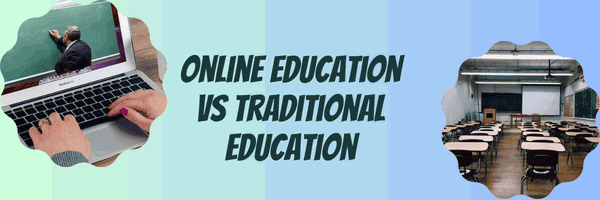In recent times, there has been a debate about whether online education will replace traditional classrooms. The emergence of technology has paved the way for digital learning that offers flexibility, accessibility, and a wealth of resources. Let's explore how online education impacts students and classrooms.
Traditional Education and its Strengths
For centuries, traditional education relied on physical classrooms and direct teaching methods as the foundation of learning. Its strengths include:
Face-to-Face Interaction:
In a traditional classroom, students and teachers interact directly, increasing engagement and immediate feedback.
Structured Learning Environment:
The classroom provides a structured routine that can enhance discipline and time management skills.
Social Development:
Students learn social skills through friends' interactions and group activities.
Hands-On Experiences:
Science experiments, art projects, and interactive learning activities are more feasible in a physical classroom.
Pros and Cons
Let's consider the advantages and disadvantages of traditional education:
Pros:
- Face-to-face interaction
- Social development
- Hands-on experiences
Cons:
- Limited flexibility
- Geographical constraints
- Potentially higher costs
The Rise of Online Education
Online education has emerged as a new form of learning with the advancement of technology. This digital form of learning offers several advantages:
Flexibility:
Online education offers flexible learning, allowing students to learn and study at their own pace and time.
Access to Resources:
Students can access global resources such as videos and interactive content.
Global Reach:
Online learning breaks down geographical barriers, connecting students and teachers from diverse backgrounds.
Adaptive Learning:
Some online platforms utilize algorithms to customize learning experiences according to the unique needs of each student.
Cost-Effectiveness:
Online education can be more affordable as it eliminates the need for physical infrastructure.
Pros and Cons
Let's consider the advantages and disadvantages of online learning:
Pros:
- Flexibility in the learning schedule
- Access to global resources
- Cost-effective options
Cons:
- Lack of face-to-face interaction
- Self-discipline required
- Potential for isolation
The Classroom of the Future
While online education presents numerous benefits, it is necessary to consider the potential impact on traditional classrooms. The future of education might be a blend of both approaches:
Hybrid Learning:
A blend of online and in-person learning can provide flexibility and personalized learning experiences that cater to different styles.
Outdoor and Mobile Classrooms:
Innovations like outdoor classrooms and mobile learning units can make learning more dynamic and experiential.
Focus on Soft Skills:
Traditional classrooms can focus on fostering teamwork, communication, and interpersonal skills, complementing online academic learning.
Educators' Role
Adapting Teaching Techniques:
Teachers are adapting their teaching methods to suit online environments. Online quizzes, video lectures, and virtual discussions have become essential in modern education.
Creating Engaging Online Content:
Developing content that is both informative and engaging is a crucial skill for educators in the digital era.
Shaping the Future of Education
Online Schools and Degrees:
Fully online schools and degrees are becoming more common. It offers recognized programs for individuals who require flexible schedules due to work or other commitments.
Innovations in Digital Learning:
Advanced technologies like virtual reality, gamification, and AI-driven adaptive learning are changing how students learn and remember information.
In conclusion, technology is reshaping education. While online learning offers flexibility and ease, traditional classrooms are still significant for developing social skills and fostering interaction. The future of education lies in a balanced approach.








0 Comments